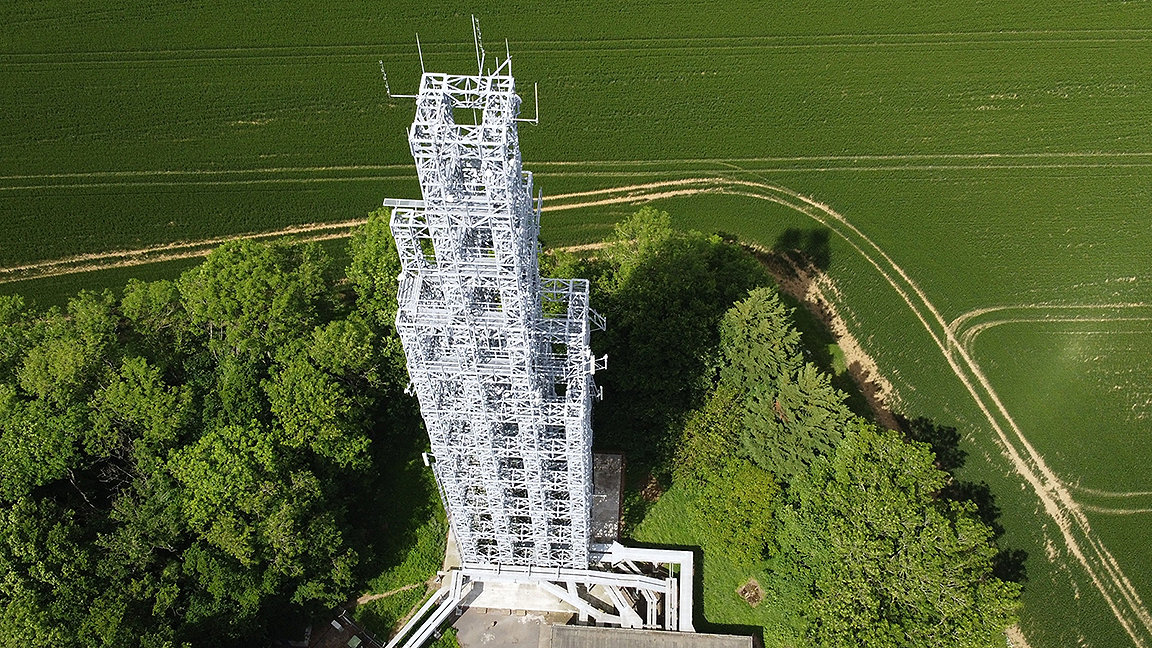
In a number of significant recent decisions, the Upper Tribunal (Lands Chamber) has provided useful guidance on the best approach to take when valuing telecommunications sites under the Electronic Communications Code – and indicated the most helpful evidence to use where such issues are the subject of court proceedings.
The guidance shows a shift in the tribunal's approach, the effect of which is to limit the scope and nature of future valuation evidence.
Why is valuation under the code difficult?
When it took effect on 28 December 2017 the code introduced the no-network assumption: agreements are to be valued broadly on the basis of an arm's-length, open-market transaction, but subject to the additional assumption that the right to which the transaction relates does not concern the provision or use of an electronic communications network. This creates a number of difficulties in practice.
First, it means the valuation exercise is inherently artificial. In practice, there are no lettings for the purposes of code rights where the parties are unaware of the site's possible use for telecoms and do not negotiate on that basis.
Second, given that telecommunications equipment is often installed on rooftops or in small compounds in corners of fields, sites often have few, if any, possible alternative uses. The main value of most sites is likely to lie in their suitability for these communications uses, which the no-network assumption requires the valuer to ignore.
Third, guidance from the tribunal as well as the market trend since the code came into force five years ago has established that most telecoms lettings are now made for small amounts of money – small not only in the context of what those sites would have been worth under the old code, but also the wider market.
This being the case, we should query the amount of time and effort parties put into calculating the price for an agreement when the cost of these negotiations can easily become disproportionate to the rent payable over the term.
Previous cases rely on staged calculation
In cases such as On Tower UK Limited v JH and FW Green Limited [2020] UKUT 0348, also known as Dale Park, the tribunal adopted the three-stage approach derived from Vodafone v Hanover Capital Ltd (renewal of a tenancy of a telecommunication mast site) (Rev 2) [2020] EW Misc 18 (CC) to deal with the artificial requirements of valuation under the code.
This approach has become familiar to valuers experienced in code valuations and forms the basis of many negotiations. The three stages are as follows.
- Alternative use value: for many sites this may be nominal; but some may be capable of use as, for example, car parking spaces.
- Additional benefit to the operator: sums are added to reflect how much more the telecommunications scheme would benefit the landowner than the alternative use; for example, there may be additional security.
- Additional burden on the landowner: again, sums are added to account for any imposition the telecoms scheme would make on the landowner, beyond those of the putative alternative use. For example, the code agreement may contemplate frequent access, whereas the alternative might only involve occasional access.
While the Hanover staged approach remains useful as a way of cross-checking land value when negotiating schemes, more recent guidance from the tribunal – discussed below – suggests that, in most cases, the level of detail it requires is not relevant. Rather, parties are now encouraged to use a table of previous tribunal decisions and those values as the starting point for the type of site in question.
Tribunal devises table to guide approach
The tribunal first presented an alternative, tabular approach in EE Ltd & Anor v Affinity Water Ltd (ELECTRONIC COMMUNICATIONS CODE – NEW AGREEMENT OR MODIFICATION – water tower – consideration and compensation) [2022] UKUT 8 (LC), which concerned the renewal of a telecommunications agreement in respect of a water tower.
The experts in Affinity Water adopted a detailed approach to their valuations. They calculated the total expenditure at the site, identified which elements of that expenditure benefited the operators, and attributed a percentage to reflect that benefit, then divided that to reflect the number of operators using the site.
While the tribunal engaged with the approach the experts had taken and used it to arrive at a value, it did not encourage others to follow the same course. On the contrary, the tribunal found it to be 'exhaustive' and 'entirely detached' from what would happen in the hypothetical transaction.
Where they were negotiating such modest amounts, the tribunal commented, it was not believable that the hypothetical willing parties would 'descend to the level of granularity' the experts had adopted.
By way of an alternative approach, the tribunal provided what is now commonly known as the Affinity Water table. This identifies previous tribunal decisions, other than consensual agreements, by general descriptions of the types of site, and lists the value the tribunal attributed to them. The values are to be used as broad guidance for the level of consideration the tribunal can be expected to determine.
As at the time of writing, the most recent version of the table is in paragraph 223 of the decision in Tower UK Ltd v AP Wireless (UK) Ltd (Audley House) (ELECTRONIC COMMUNICATIONS CODE – CODE RIGHTS) [2022] UKUT 152 (LC).
How to use the Affinity Water table
- In Affinity Water itself, the tribunal commented that it 'would be surprised if the value of [c]ode rights fell significantly outside the ranges indicated by previous decisions concerning sites with similar characteristics', and expressly stated that in view of the guidance the table provides, it should rarely be necessary for experts to present evidence on the basis of the Hanover stages.
- In EE Ltd & Anor v Stephenson & Anor (ELECTRONIC COMMUNICATIONS CODE - NEW AGREEMENT – terms of renewal of a lease at an existing site – relevance of restrictive user covenant in intermediate lease – consideration) [2022] UKUT 180 (LC), the tribunal considered that there was 'nothing particularly unusual' about the rural site in question and therefore awarded an annual consideration of £750, exactly in line with the table.
- In Audley House, the tribunal commented further that, '[a]bsent special features (such as a valuable alternative use), it is unlikely that the [t]ribunal will assess consideration at a level that is not consistent with the range of values seen in the table'. The tribunal again reiterated that Hanover is now, at best, useful as a means of cross-checking land value.
- The table at present only includes examples of a handful of different types of site. However, that does not mean it is useless for sites that do not fall in those categories. In Audley House – where the amounts for three sites were agreed by the valuers rather than determined by the tribunal, and therefore not added to the table – the tribunal commented: 'To be blunt, it should be obvious that a ground-level site in a car park or a haulage yard is going to command a higher rent than a rural site but less than a rooftop site or the top of a water tower.'
In the light of the emphatic and repeated guidance from the tribunal, it is now clear that the latest version of the Affinity Water table must be the starting point for any code valuation, and that good reason will need to be shown to justify a departure from those values. Even where a site does not directly correspond to a row in the table, thought must still be given to the tone of the table and how any proposed valuation compares.
Table 1: Affinity Water table with guidance on values
Decision |
Type of property/location |
Annual consideration |
City, residential rooftop |
£5,000 |
|
City, department store/offices |
£3,850 |
|
Affinity Water Limited |
Suburban residential, water tower |
£3,300 |
Dale Park |
Rural, adjacent to housing |
£1,200 |
Rural, no nearby housing |
£600 (£1,500 in year of installation) |
© Crown copyright 2022
When to find actual comparables
As noted above, one of the ramifications of the no-network assumption is that there are no actual transactions on all fours with those required by the statutory assumption.
The tribunal has now given clear guidance that, under the code, comparables are likely only to be useful as evidence of the value of a potential alternative use. Evidence of actual telecommunications lettings, however, is of no help: a clear statement to that effect can be found in Pendown, coupled with a warning that the tribunal will not look favourably on the costs of preparing such evidence if presented in court.
It should be noted that this is not the position with respect to valuation of rents under section 34 of the Landlord and Tenant Act 1954, which does not currently incorporate a no-network assumption. That is set to change, however, when the Product Security and Telecommunications Infrastructure Act 2022 comes into force, which is set to align the 1954 Act valuation regime more closely with that under the code. The relevant sections will be brought into force by regulations once they have been laid.
Summarising the tribunal's guidance
It is helpful to summarise some of the key points arising out of the guidance recently given by the tribunal in the cases mentioned above for valuations under paragraph 24 of the code, particularly where evidence is to be presented to the tribunal.
- The starting point is the Affinity Water table. The tribunal is now issuing directions on this basis, requiring expert valuers to have regard to the relevant passages in Affinity Water and Audley House and to justify any deviation from the values in the table. As the table refers to the values of sites without having regard to 'any special features or particular sensitivities [that] a particular location may exhibit', it may be that divergence is justified either because a given site is particularly unusual, or because it is of a type not yet to be found in the table; although that does not mean the table is irrelevant.
- Comparables are useful only as evidence of valuable alternative use. If, for example, it is contended that a site might be used for storage, then comparable evidence may be valuable to show that there would be demand for such a use at that site and what rent might be achieved. However, evidence of other telecommunications lettings is not helpful, and the costs of preparing it are unlikely to be recovered, even if they may be useful to parties negotiating consensual deals in the market rather than the hypothetical transaction with which the tribunal is concerned.
- Hanover is now a secondary approach. While the three stages may be useful in negotiations and can provide a useful cross-check, they are in most cases that go before the tribunal likely to involve an unrealistic level of detail given the small sums at issue. The higher-level approach of the Affinity Water table is preferred.
Fern Schofield is a barrister at Falcon Chambers
Contact Fern: Email
Related competencies include: Conflict avoidance, management and dispute resolution procedures, Landlord and tenant, Legal/regulatory compliance

Fern Schofield

